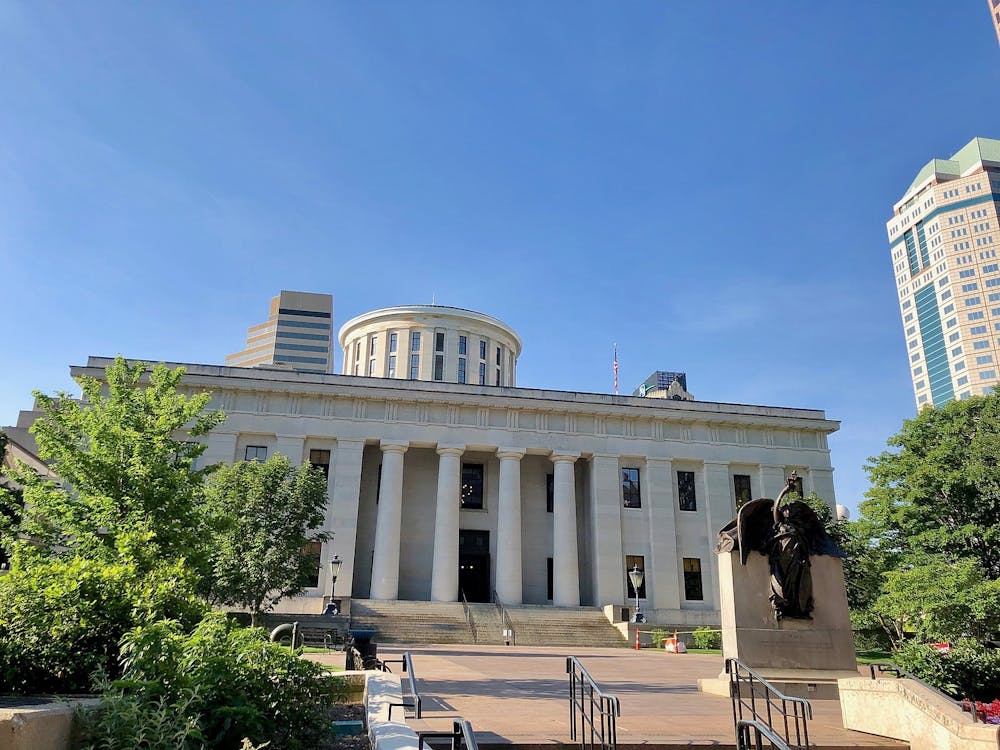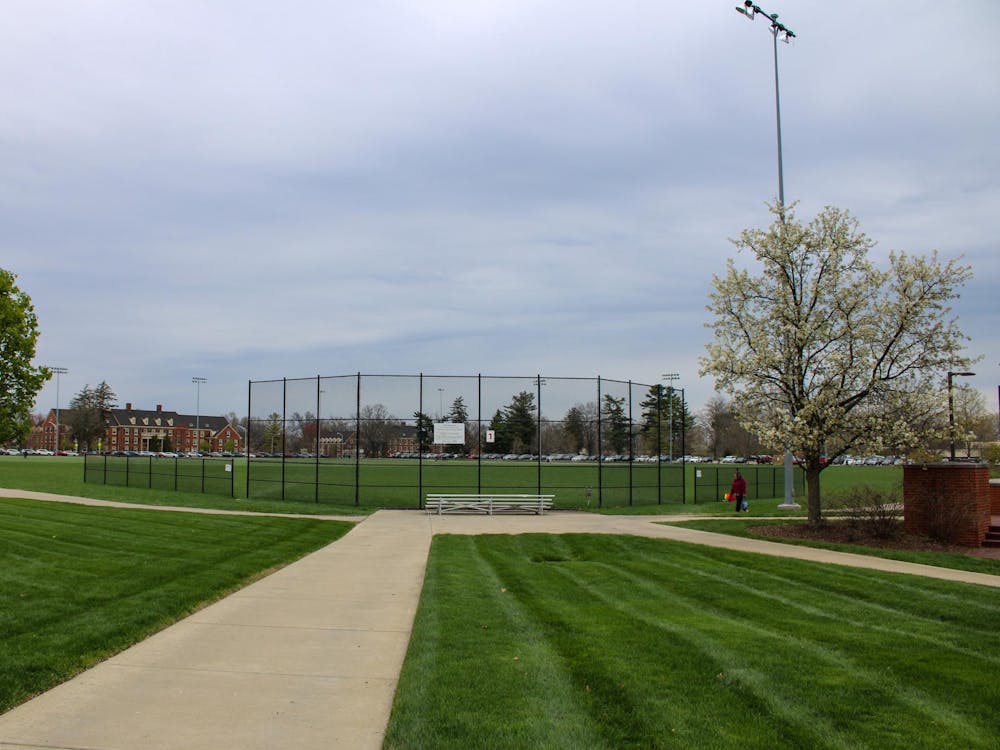For years, Ohio’s voting process has been logistically inefficient: no same-day voter registration, no digitized absentee voting request forms, no state holiday status for Election Day to help voters find time off work.
Rather than eliminate the inefficiencies in our voting process, Ohio’s state legislature decided to pass House Bill 458: a law that has quietly and radically undermined Ohio democracy.
What has changed under H.B. 458?
In person, curbside and absentee voting processes have been drastically complicated under the law’s ramifications.
To vote in-person, Ohio now requires voters to have an Ohio general ID, an Ohio driver’s license or a passport. Before, Ohioans could verify identity in-person using government mail, their social security number or bank statement.
For out-of-state students, this has serious implications. If I wanted to vote in-person, I would have to give up my Kentucky driver’s license, drive an hour round-trip to the nearest BMV, and obtain a free Ohio general ID or pay for an Ohio’s driver license, the latter of which would require me to complete a vision exam as well.
Junior Mollie Duffy, a public administration major and voting rights activist with RedHawks Count, says this issue will directly affect the Miami University community.
“College students should care and be informed of the changes in voting laws across the state, specifically the photo ID laws, because this will directly impact their ability to cast a ballot,” Duffy said. “This photo ID law will most likely have the greatest impact on those who do not have proper photo identification and out-of-state students who have limited photo ID options.”
For voters without Ohio IDs or without the ability to make it in-person to the polls on Election Day, absentee voting is the only option. However, H.B. 458 has significantly overcomplicated the absentee voting process as well.
Previously, Ohio absentee voters had to submit ballot request forms no fewer than three days prior to the election to receive an absentee ballot, and the state of Ohio would cover all postage costs.
Rather than simplifying the voting process and digitizing the ballot request process like 19 other states, Ohio decided to make absentee voting incredibly inefficient: Request forms must now be submitted at least seven days before the election, the state will not pay for postage and there is only one drop-off ballot box allowed per county.
For Miami students, driving to the ballot box is a one-hour round trip endeavor. And that’s if you’re a student who has a car.
Enjoy what you're reading?
Signup for our newsletter
Howe Center for Writing Excellence Director Elizabeth Wardle, a leader within the nonpartisan voter rights education group League of Women Voters, explains how other states avoid these inefficiencies.
“Many other states give us examples of how simple and accessible voting can be. For example, Michigan allows you to register to vote the same day you vote, while Ohio makes you register at least 30 days in advance,” Wardle said.
These obstacles make it significantly more difficult for everyday Ohioans to understand the voting process.
“These are intentional choices on the part of your elected official to keep as many people as possible from voting. The rules are complicated and inaccessible on purpose, and this should make you very angry,” Wardle wrote in an email to The Miami Student. “Our country has a history of keeping ‘unwanted’ voters (women and African Americans, for example) from the ballot — through laws that denied us the right to vote, through literacy tests, through all sorts of stumbling blocks and obstacles.”
Why was this law passed in the first place?
Advocates of H.B. 458 claim these additional requirements are needed to be passed to protect election integrity — which would be a worthy cause, if not for the fact that Ohio has never had an election integrity problem.
In the past decade, Ohio has had fewer than 30 criminal cases of voter fraud.
If widespread voter fraud even was a problem in Ohio, voter ID laws wouldn’t do anything to fix it: peer-reviewed studies have proven that voter ID laws do not actually deter real voter fraud.
Why are we fixing a problem we don’t have with a solution that wouldn’t work if we even had the problem?
To disenfranchise Ohioans.
A common myth surrounding voter suppression policy is that it "helps" Republicans. The theory has been repeated a thousand times: lower voter turnout helps Republicans, higher voter turnout helps Democrats.
In actuality, voter suppression doesn’t "help" anybody. Beyond the essential fact that voter suppression undermines democracy, lower voter turnout doesn’t benefit either party — including the Ohio Republicans that seek to gain from it.
While dozens of state GOPs across the country have passed voter suppression laws, this strategy will hurt the GOP in the long-term by inadvertently suppressing its own voters.
If the GOP won’t care about democracy, it at least should selfishly care about electability.
For Wardle, ensuring every Ohioan is informed about their voting rights is essential because all Ohioans have the right to vote in fair elections and have their voices heard.
“Every right you care about hinges on your right to vote in fair elections,” she said.
What can you do?
First and foremost, know the voting laws. Tell your friends, roommates, ex-boyfriends, parents: anyone voting in an Ohio election needs to know these important changes.
The League of Women Voters’ website outlines voting information in each state.
For students feeling anxiety and frustration about undemocratic policy changes, taking action with one of Miami’s student groups can help give students community and allow students to make large-scale changes through activism.
“It's easy to get overwhelmed and give up, but find one organization that can help you channel your anxiety into action,” Wardle said.
The League of Women Voters, VoteRiders, Ohio Voter Rights Coalition, Fair Districts Ohio or the Ohio Student Association are great resources that enable action.
For Duffy, voting rights activism is a calling. As a volunteer with RedHawks Count, Duffy works in voter education.
“To get involved with voting rights at Miami, [students] have quite a few different options,” Duffy said. “RedHawks Count is a student organization focused on civic engagement and they host voter registration training once a semester. Once you are trained on how to register voters, you can volunteer with the organization throughout campus.”
On May 4, representatives from Butler County’s Board of Elections, the League of Women Voters and RedHawks Count will host Act Now to Save Democracy: a non-partisan event dedicated to help students get involved in civic engagement.
“You will have the opportunity to learn about voting rules and current legislation that would impact you directly — and then take action by writing letters, using the MakerSpace, making posters and messages for social media, writing letters to your legislators and hometown newspapers, and registering to vote and much more,” Wardle said.
It is time to stand up to inefficient, ineffective and unjust laws that seek to silence college students’ voices and over-complicate our already-complicated political system to further distance the people from its government.
Learn your voting rights. Contact your local representatives. Let your voice be heard.
Meredith Perkins is an out-of-state sophomore diplomacy and global politics student and a previous teaching assistant with the Student Citizens program, a Miami Summer Scholars program that focuses on citizenship, democracy and civic engagement.




